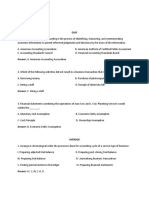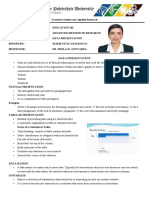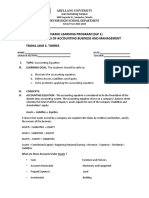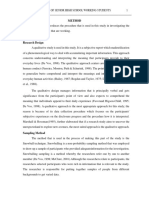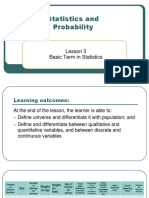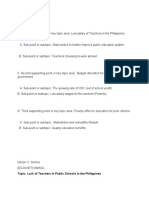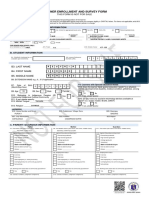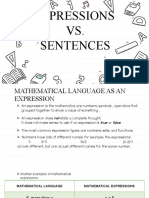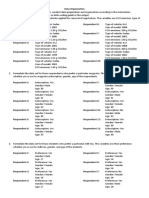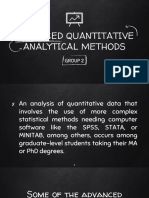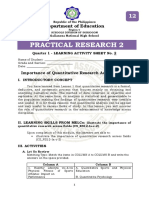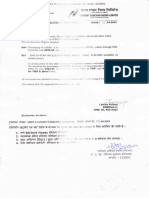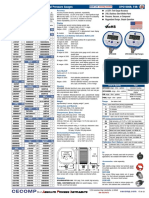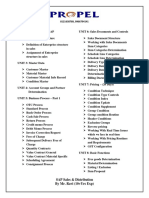100% found this document useful (1 vote)
680 views97 pagesStatistics-Introduction - 9-11-2021
There are several methods for collecting primary data, including:
1. Observation - Directly observing and recording behaviors, events, or other phenomena of interest.
2. Interviews - Asking participants questions and recording their responses either in-person, via phone, or online.
3. Questionnaires/Surveys - Having participants fill out self-administered written questionnaires or surveys that can be distributed either on paper or online.
4. Experiments - Exposing participants to controlled conditions and measuring outcomes of interest.
5. Tests - Having participants complete assessments to measure abilities, knowledge, skills, or other variables.
The most appropriate method depends on the nature of the research question, available resources, and
Uploaded by
Bernadette Ruiz AlbinoCopyright
© © All Rights Reserved
We take content rights seriously. If you suspect this is your content, claim it here.
Available Formats
Download as PDF, TXT or read online on Scribd
100% found this document useful (1 vote)
680 views97 pagesStatistics-Introduction - 9-11-2021
There are several methods for collecting primary data, including:
1. Observation - Directly observing and recording behaviors, events, or other phenomena of interest.
2. Interviews - Asking participants questions and recording their responses either in-person, via phone, or online.
3. Questionnaires/Surveys - Having participants fill out self-administered written questionnaires or surveys that can be distributed either on paper or online.
4. Experiments - Exposing participants to controlled conditions and measuring outcomes of interest.
5. Tests - Having participants complete assessments to measure abilities, knowledge, skills, or other variables.
The most appropriate method depends on the nature of the research question, available resources, and
Uploaded by
Bernadette Ruiz AlbinoCopyright
© © All Rights Reserved
We take content rights seriously. If you suspect this is your content, claim it here.
Available Formats
Download as PDF, TXT or read online on Scribd
/ 97
